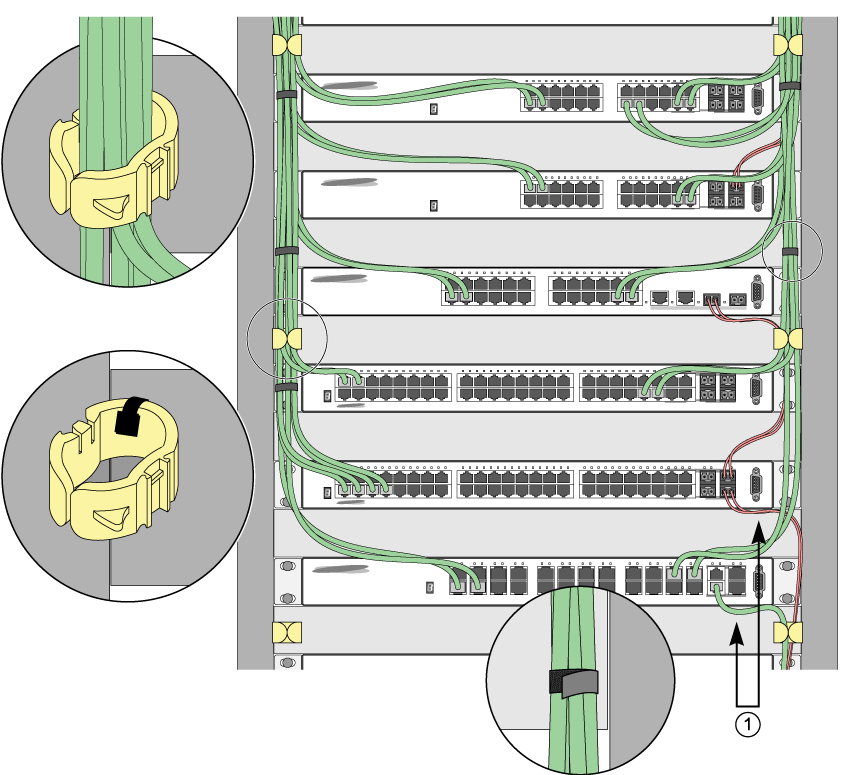Installing Cable
When you connect cable to your network equipment, keep the
following things in mind.
-
Examine cable for cuts, bends, and nicks.
-
Support cable using a cable manager that is
mounted above connectors to avoid unnecessary weight on the cable bundles.
-
Use cable managers to route cable bundles to the
left and right of the network equipment to maximize accessibility to the
connectors.
-
Provide enough slack,
approximately 5 to 7.5 cm (2 to 3 in), to provide proper strain relief as shown
in Properly Installed and Bundled Cable.
-
Bundle cable using hook-and-loop straps to avoid
injuring cables.
-
If you build your own cable, be sure that
connectors are properly crimped.
-
When installing a patch panel
using twisted pair wiring, untwist no more than 2.5 cm (1 in) of the cable to
avoid radio frequency (RF) interference.
-
Discharge the RJ45 Ethernet cable before plugging
it into a port on the switch.

Caution
Unshielded
twisted pair (UTP) cable can build up electrostatic charges when being
pulled into a new installation. Before connecting any category 5 UTP cable
to the switch, discharge ESD from the cable by plugging the RJ45 connector
into a LAN static discharge device or use an equivalent method.
-
Use plenum-rated cable when it is necessary for
safety and fire rating requirements. Consult your local building codes to
determine when it is appropriate to use plenum-rated cable, or refer to IEC
standard 850.
-
Keep all ports and connectors free of dust.
Properly Installed and Bundled Cable
| 1 = Ensure adequate slack and bend radius |



 Print
this page
Print
this page Email this topic
Email this topic Feedback
Feedback